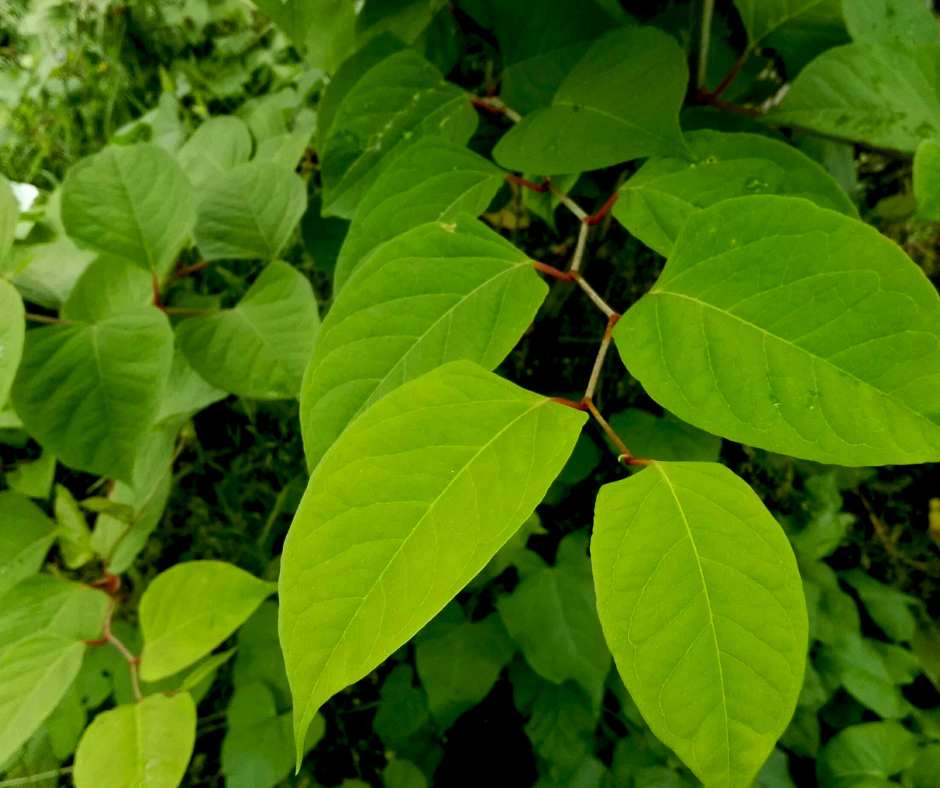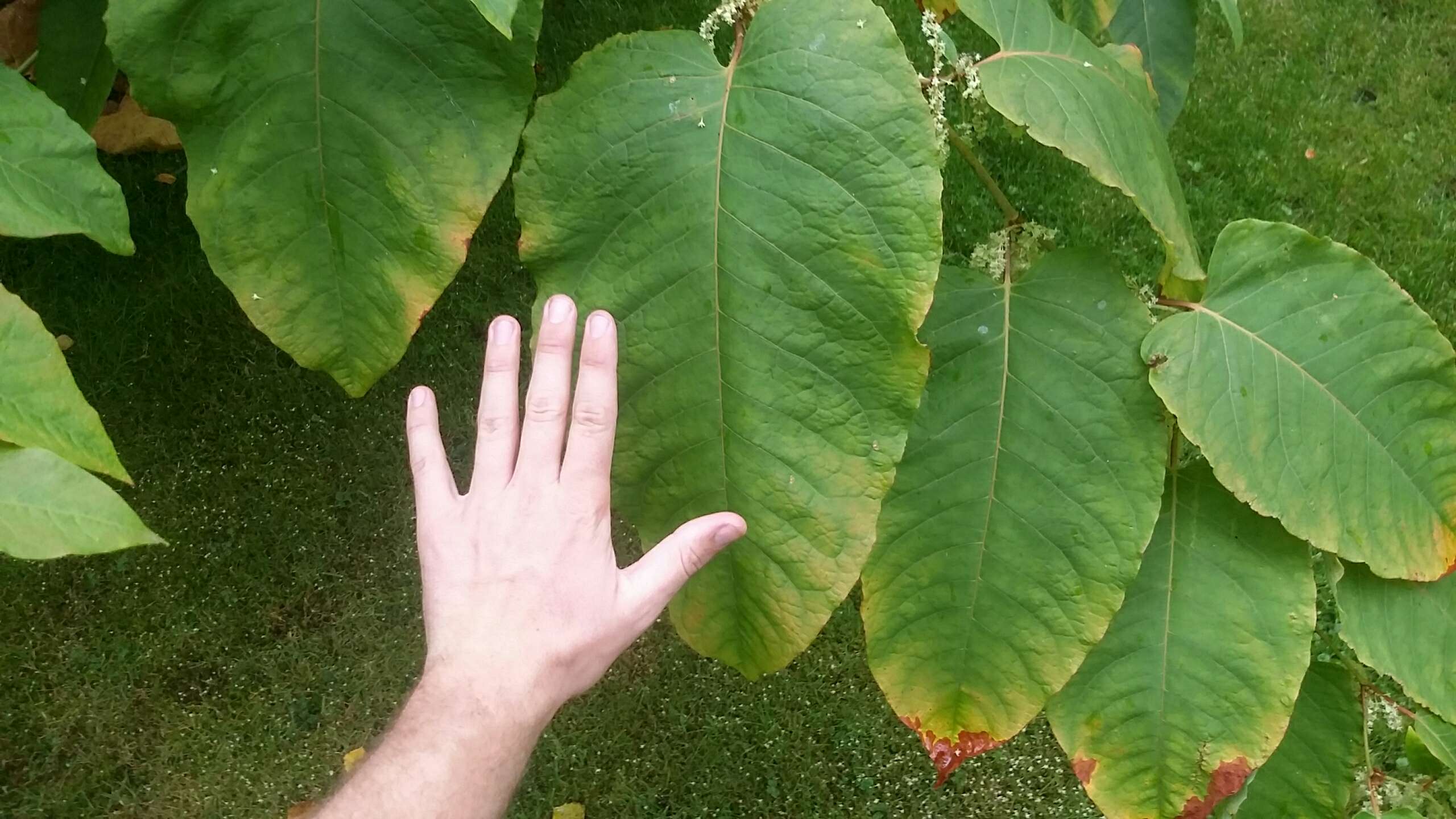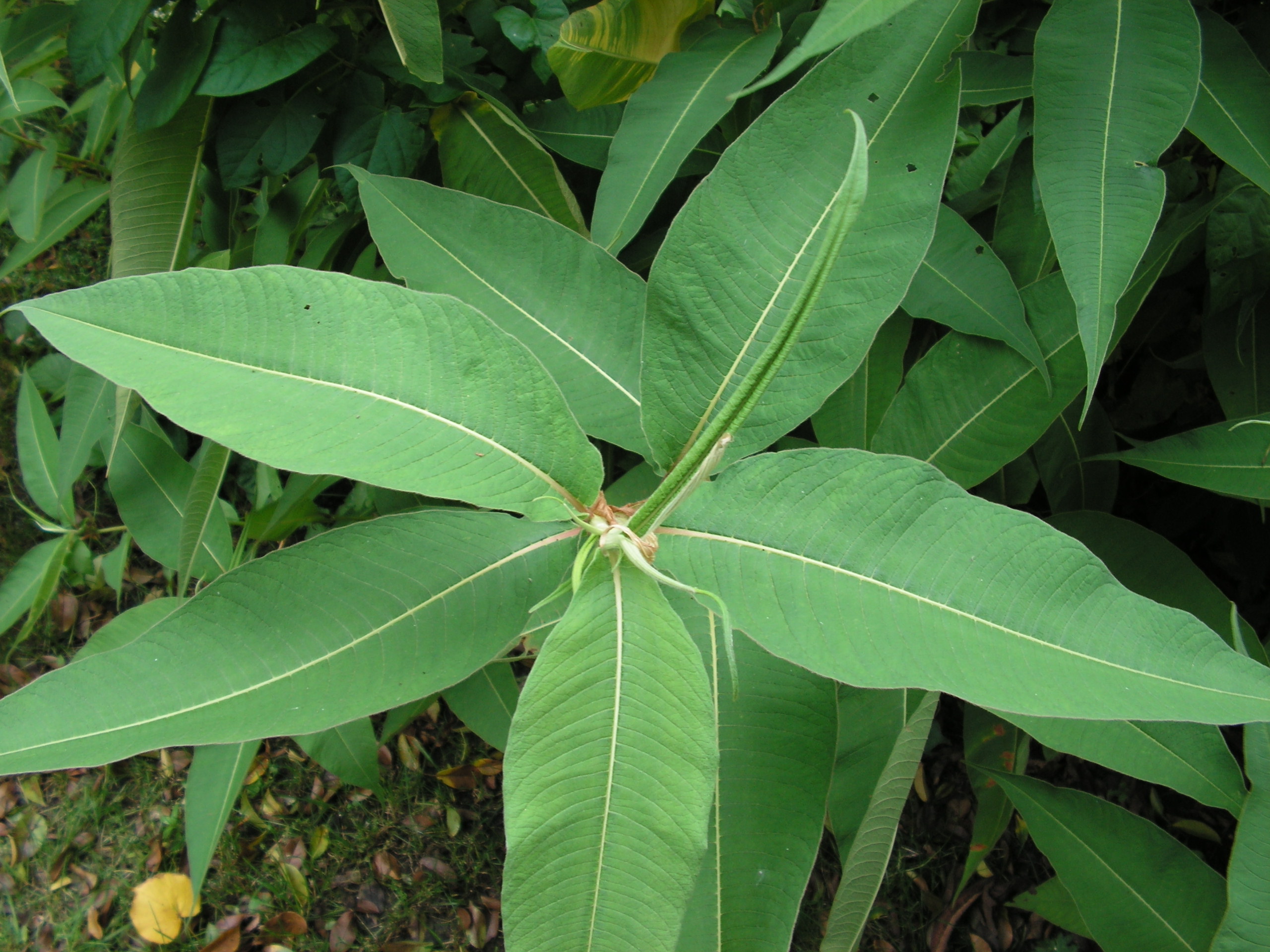
Japanese knotweed variants
Variations of Japanese knotweed
Exploring the Different Types of knotweed in the UK
Japanese knotweed comes in all shapes and sizes, from the smaller variety Dwarf knotweed to the impressive Giant knotweed. So which one is just plain Japanese knotweed? By the time you’ve read this article all will become clear, and here’s a quick at a glance overview of the different types of knotweed. And, if you’re still unsure use our free identification tool or contact the team.

GIANT KNOTWEED
Giant knotweed (Reynoutria sachalinensis) is a native of South Sakhalin, Honshu (in the north of Japan), Korea, and the Kurile Islands. It is a closely related species to Reynoutria japonica, but less widely distributed outside of the Far East.
Both male and female plants have been recorded in Europe and the UK. Although similar in many respects to japonica (cane structure, distinctive ‘zig-zag’ shape of stems, similar growth habit, etc), it grows much taller (4-5 metres or 13-16 feet) and has much larger, elongated leaves. The leaves can grow to around 40cm (16 inches) long and up to 27cm (11 inches) wide.
They are pointed at the tip, somewhat crinkly in appearance and have long white hairs (trichomes) on the underside. The base of the leaves is deeply lobed, forming a heart shape. Growth generally begins later than japonica, usually mid to late spring, and leaf drop generally occurs earlier than japonica in the autumn.
Rhizomes are creamier in colour internally, rather than the distinctive orange of japonica. Creamy-white flowers appear in late summer/early autumn in dense panicles hanging off the stems. The Japanese call Giant knotweed ‘o itadori’, which, with enviable simplicity, means “big strong plant”.

BOHEMIAN KNOTWEED
‘Bohemica’ (Reynoutria x Bohemica) is a hybrid species formed by Japanese knotweed and Giant knotweed. Consequently, it is also known by the name Reynoutria japonica var. japonica x Reynoutria sachalinensis. For many years, ‘Bohemica’ went unrecognised as a separate species and was only formally classified in 1983. It is widely distributed, with both male and female plants recorded in the UK. It can be variable in habit and it is common to find ‘bohemica’ growing in close proximity to, or amongst, Japanese knotweed. Leaves are larger than Reynoutria japonica, up to 25cm (10 inches) long and 18cm (7 inches) wide, growing in a heart shape.
Leaves are usually longer than they are wide, pointed at the tip, slightly crinkled in appearance and darker green than japonica, with short white hairs (trichomes) growing on the veins on the underside – particularly in the early part of the growing season. Veins are usually reddish-purple in immature leaves. Growing habit, including stem colour and shape, is extremely similar to japonica. ‘Bohemica’ grows, on average, to a height of 2.5m-3m (8-10 feet), though taller plants up to 4m (13 feet) have been recorded. Rhizomes have a less prominent colour internally than japonica and can be bleached out completely to white. An absence of crowns has been noted during excavations. Creamy-white flowers appear in dense clusters in late summer/early autumn.

DWARF JAPANESE KNOTWEED
Dwarf Japanese knotweed (Reynoutria japonica Houtt.) also known as Polygonum reynoutria, Polygonum compactum and Polygonum pictum ‘Houtt.’ is a dwarf form of Japanese knotweed. It reaches only 1m-1.8m (40 inches) in height and emerges later than standard japonica (usually late spring). It retains the distinctive ‘zig zag’ petiole structure, but the leaves are darker green, more variable in shape, up to 11cm (4 inches) long and up to 10cm (3.5 inches) wide. Leaves have crinkled edges, a leathery texture, reddish veins and are often curled into a concave form. Upright clusters of white or pale pink flowers appear in late summer, which often mature to dark pink or red.
Both male and female plants occur in Europe and the UK, though ‘Houtt.’ is rare in countries like Germany and the Czech Republic. Dwarf Japanese knotweed is still available to purchase from some nurseries in the US, where it is promoted for its ground cover properties or as a potted plant. Although smaller and less invasive than Japanese knotweed, Dwarf knotweed still retains some of the voracious growing habits of the species. It seems some lessons are slow to learn.

HIMALAYAN KNOTWEED
Himalayan knotweed (Persicaria wallichii) is known by many names, and is referred to in some sources as Polygonum polystachyum, Polygonum wallichii, Persicaria polystachya, Reynoutria polystachya or Aconogonum polystachyum. With its slender, elongated leaves, it bears greater similarity to Giant knotweed and Lesser knotweed, to which it is closely related, and is often mistaken for Lesser knotweed (and occasionally for Himalayan balsam). Native of the Himalayan region from Afghanistan to southwest China, it is one of the least common knotweeds in the UK, though is more prevalent in the southwest of England. It grows quickly to a height of up to 1.8m (6 feet).
Stems are usually green (though leaf stems can contain the distinctive knotweed pink) and have the characteristic ‘zig zag’ from node to node. Stems are hairy, and a key identifier of the plant is the brown sheaths that persist at the bases of the leaf stalks. The dark green, alternate, leathery leaves are 10-20cm long (4-8 inches), tapered to a point. Short hairs can often be found on the veins, edges and undersides. Leaf shapes can differ within the species, with leaf bases varying from tapering to the leaf stem to developing a slight heart-shaped lip.
White or pale pink flowers bloom from mid-summer to late autumn and occur in loose, branched clusters around 20-35cm (8-14 inches) long. Flowers are hermaphrodites (ie contain both male and female parts). Himalayan knotweed is most commonly found in moist soils and poses a significant ecological threat to riparian areas where it can survive flooding and quickly colonise scoured shores and islands when the floodwaters recede.

LESSER KNOTWEED
Lesser knotweed (Persicaria campanulata) also referred to in some sources as Polygonum campanulatum, Polygonum campanulata or Reynoutria campanulatum, is another member of the species that is still actively being sold by garden centres and plant suppliers in both the US and the UK. A native of North India and Southwest China, this knotweed is less invasive than the others but still retains a familiar vigour of growth. Leaf size can be variable, though conforms to the same long shape. Lesser knotweed bears a casual resemblance to Himalayan balsam (Impatiens glandulifera), and its love of moist soil means it is often growing alongside this troublesome plant.
Veins on the leaf can sometimes be reddish and the leaves are distinctly grooved in a pattern reminiscent of herringbone. The undersides of the leaves are much lighter in colour and are felted by small white hairs. Persicaria campanulata grows to a height of around 60-90cm (2-3 feet) and produces flowers mid-summer that remain until the autumn. The flowers are tiny, pale pink or white, and are bell-shaped (hence the name) and produced in clusters on short spikes.
Stems are usually clear of foliage for the lower two-thirds of their length and are slightly crooked due to bending at the nodes. The distinctive knotweed ‘zig-zag’ is missing, although leaves are still produced alternate on the stem. This species is less widespread in the UK, though it is more common in parts of Scotland and Northern Ireland.


